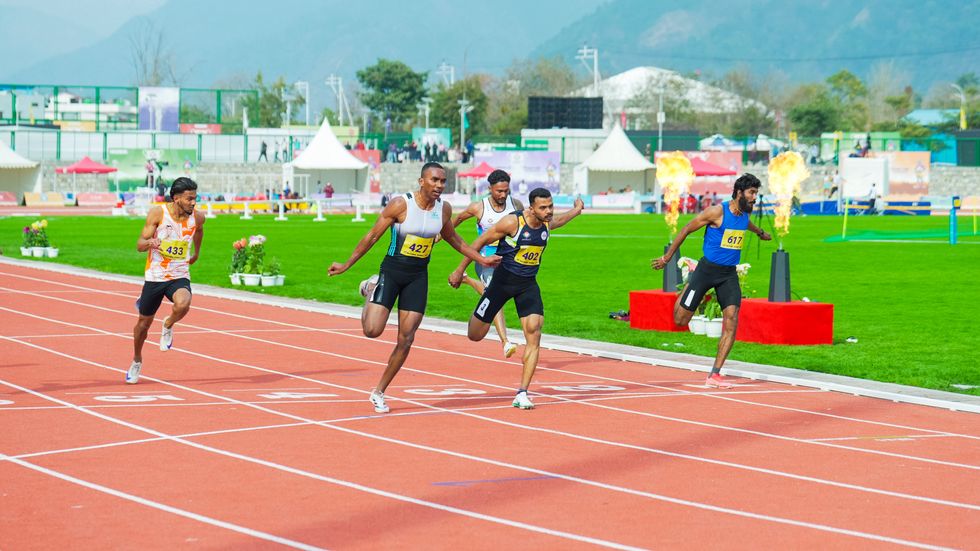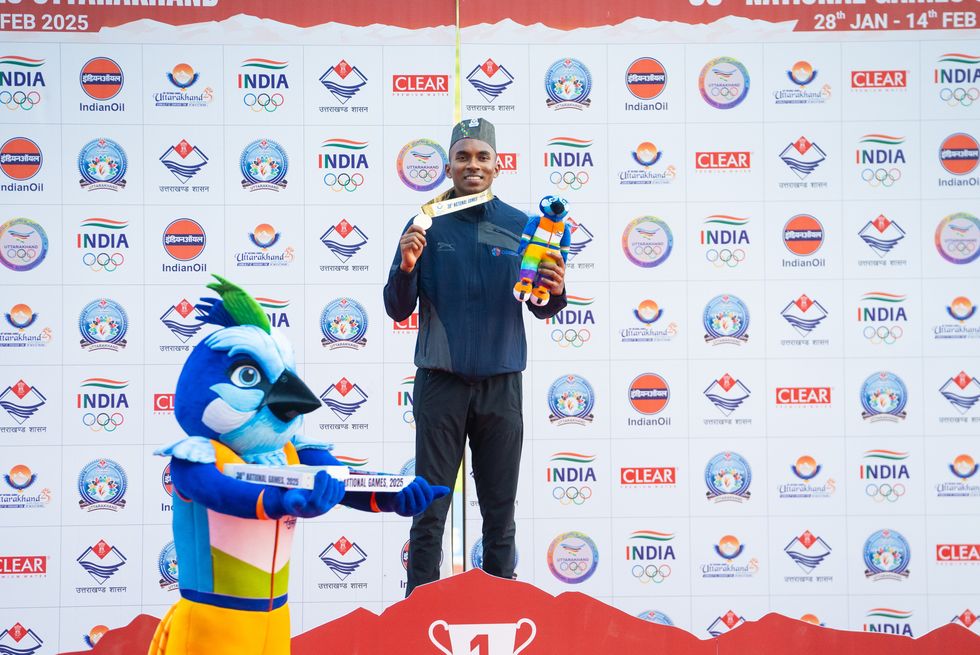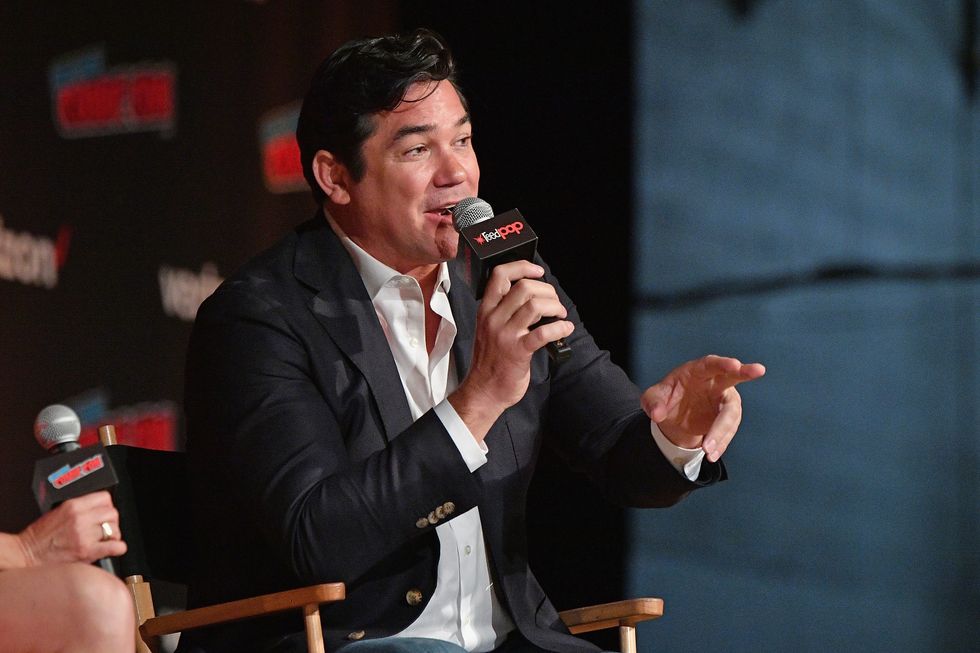THE acclaimed historian, William Dalrymple, recently chatted to Eastern Eye about his life in India during a break in proceedings at the Financial Times Weekend Festival, held annually in the grounds of Kenwood House bordering the lush green of Hampstead Heath in north London.
He was at the festival to talk about his new book, The Golden Road: How Ancient India Transformed the World.
His interview with Eastern Eye was interrupted by passing Indian admirers, among them were chef and cookery writer Ravinder Bhogal, her husband Nadeem Lalani, and the musician Nitin Sawhney.
Meanwhile, Dalrymple’s wife, the artist Olivia Fraser, handed her husband a cup of coffee. The couple and their three children live on a goat farm outside Delhi.
His Scottish lineage itself requires a bit of research. William Benedict Hamilton-Dalrymple was born on March 20, 1965 and read history at Trinity College, Cambridge. He is the son of Sir Hew Hamilton-Dalrymple, 10th Baronet of North Berwick and Lady Anne-Louise Keppel, a daughter of Walter Keppel, 9th Earl of Albemarle; through this line of descent, he is the third cousin of Queen Camilla, both being great-great-grandchildren of William Keppel, 7th Earl of Albemarle. He is a great nephew of Virginia Woolf.
His books, mostly bestsellers, include In Xanadu (1989); City of Djinns: A Year in Delhi (1994); From the Holy Mountain: A Journey in the Shadow of Byzantium (1997); and The Age of Kali (1998).
He is also the author of Nine Lives: In Search of the Sacred in Modern India (2009); Koh-i-Noor: The History of the World’s Most Infamous Diamond (2017), co-written with the BBC journalist Anita Anand; and The Writer’s Eye (2016).
The covers of The Golden RoadHis “Company quartet” includes White Mughals (2002); The Last Mughal, The Fall of a Dynasty, Delhi 1857 (2006); Return of a King: The Battle for Afghanistan (2012); and The Anarchy: The Relentless Rise of the East India Company (2019).
In photo shoots to coincide with the publication of his books, he is likely to have an Indian shawl casually draped round his shoulders.
In fact, Dalrymple is regarded as an “honorary Indian”.
“By some people,” he acknowledges. He points out that he has now lived happily in India for 40 years.
“I went for the first time, aged 18,” he remembers. “I had my 19th birthday in Hampi (in Karnataka). All my adult life I have lived in India, though I am not Indian, and I can never really be Indian. I don’t have an Indian passport.”
When it’s suggested he knows more about India than most Indians, he demurs: “That’s not for me to say. But I know I have Indian ancestors from Chandannagar (previously Chandernagore) (in West Bengal). But I’m being nitpicky here. All my life I have had a very, very generous reception in India.”
He adds that he is “incredibly used” to living in India: “I’ve always loved it. I live there for the pleasure of it. There are many other jobs I could be doing and many other parts of the world that I could be writing about. I go on a summer holiday in Greece or somewhere, and I do think it would be rather lovely to write about the Corinth or the Peloponnese or Italy. But India keeps taking me back.”
Have his books, especially his savaging of the East India Company in The Anarchy, been influential in persuading young British people to look at the empire through critical eyes?
“I’m only a humble foot soldier in a wider movement, but yes, there’s been an awful lot of work by many authors showing that the very uncritical view of empire that we were brought up with hid an awful lot of war crimes and atrocities,” says Dalrymple. “And all four of my company books demonstrate that very clearly, though there are a thousand other authors working at the same coal face.
“And we interview them every week in my podcast with Anita Anand – Empire – which I think has had far more influence than my books. With books, you’re lucky if you sell 100,000 copies after five years of hard work. But the podcast is listened to every week by 880,000 people. It’s a completely different scale.”
He adds that Sathnam Sanghera, author of Empireland, “has been an important part of the story. Anita (Anand) has been important part of the story. David Olusoga, not of Indian origin but working as a Nigerian in the same sort of field, has been important part of it. And none of us are (extremist left) Naxalites mounting the barricades.”
Dalrymple and his wife with Nitin Sawhney, Ravinder Bhogal and her husband Nadeem LalaniSanghera said that although Dalrymple has been just as critical of the Empire, he has faced very little racist abuse that is heaped on non-white authors.
Dalrymple agrees: “That’s a difference. On the other hand, many people in India have not been thrilled with my book about the Mughals. In general, it’s still true that it’s very easy for people to work well in both directions. It’s still what our diplomat friends like to call ‘the living bridge’, and it’s still very open. There will be some resistance in both directions, but it’s a positive experience for both peoples crossing in the other direction.”
Judging from social media, he anticipated “a mixed reception” for The Golden Road when he got back to India. This was because a westerner was writing about India’s classical past.
Dalrymple is considered to be very pro-Indian, so why isn’t there an Indian version of the author living in the UK and being equally positive about Britain?
He doesn’t accept the premise of the question: “I mean, in a different field, there hasn’t been a Rishi Sunak in India. You’ve had an Indian prime minister. You’ve got the (Lakshmi) Mittals. You’ve got a thousand super successful Indian businessmen all over this country. At one point it was a toss up (for the Tory leadership) between Rishi, Suella Braverman and Priti Patel. So, I’m not sure I would entirely agree with your assessment.
“Indians find it very easy to do well here, as evidenced by their enormous success. They are the most successful immigrant group. There are 350 years of Imperial atrocity before me arriving in 1984. But in both countries, you will find those who mutter about the number of Indians in the cabinet, or you will find those on the internet who are less than thrilled that some white guy is writing about Brahmagupta and Aryabhata. Inevitably, you’re not going to have everyone love you. In general, I should say this loud and clear, my biggest market is India.
“For most of my early books, I was mainly writing for a British audience. But I think the changeover came probably with White Mughals, the first of my books to sell more in India than in Britain. And that’s been the case with every book I have written since. The Anarchy sold 100,000 hardback in India, and it would have sold, I would imagine, a third less in Britain.”







 Kujur's transformation began when he joined the Reliance Foundation programme in December 2022
Kujur's transformation began when he joined the Reliance Foundation programme in December 2022











 New ‘Superman’ movie sparks backlash for portraying hero as immigrant symbol Instagram/
New ‘Superman’ movie sparks backlash for portraying hero as immigrant symbol Instagram/ Director James Gunn attends the red carpet for the Superman movie premiereGetty Images
Director James Gunn attends the red carpet for the Superman movie premiereGetty Images  Dean Cain accused Hollywood of going too far with “woke” reinterpretationsGetty Images
Dean Cain accused Hollywood of going too far with “woke” reinterpretationsGetty Images 
